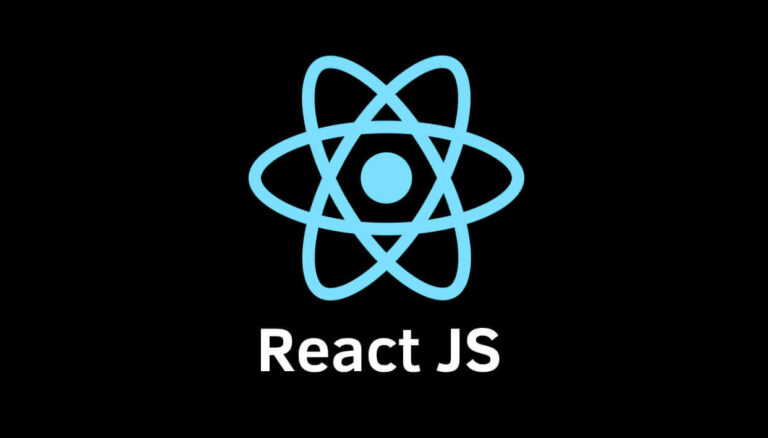Top 50 Must-know Programming Interview Questions & Answers

Software companies are always on the lookout for good programming talent, with telephone and online interviews often deciding your fate in just a few minutes.
A good programmer needs to be as versatile as possible – from systems understanding to general programming, different concepts, and technologies, as well as being up to date.
The following is a list of 50 top programming interview questions and their answer. They shed a light on the varied concepts that every beginner must know to excel.
1. What is Computer Programming?
Computer programming is the process of encoding logical processes to be executed by a computer. This is accomplished by using a computer language that contains the necessary instructions.
The process can be further divided into design, coding, debugging and updating.
2. What is Debugging?
Debugging is the process of discovering and eliminating errors in a computer program’s software source. There are many methods of going about this, but most development environments come with an integrated debugger to make things easier.
3. What is a Compiler?
A compiler is a software program that takes the written program and turns it into machine code that a computer can understand.
A typical compiler package, however, is made up of a pre-processor, the main compiler that turns the computer language into assembly code, and an assembler.
4. What is a Pre-processor?
A pre-processor is a program that analyses the written computer code to find and satisfy its dependencies, such as needed libraries.
After the pre-processor makes sure that everything, including the execution environment, is okay, a compiler can then convert the code to assembly code.
5. What is an Assembler?
An assembler is a program that takes the lowest level of human-readable computer code called assembly language and turns it into the machine code that a computer can work with.
Assembly language is typically output by a compiler although one can also code directly. An assembly program might include code such as:
MOV AH, 02H
but when you compile it to machine code, you get only zeros and ones (eg. 0110011110101010).
6. How Does A Program Execute?
First, the operating system loads the specified program from hard-disk storage into system memory (RAM) and then allows it to execute by directing the CPU to continue its execution from the program’s first memory address. The CPU executes any command it sees, then moves to the next one, often repeating this procedure millions of times per second.
32-bit CPUs execute 32-bit (4-byte, double-word) instructions at a go, while 64-bit CPUs execute 64-bit (8-byte, quad-word) instructions at a go. These instructions are built into the CPU and it is the assembler that turns programming code into the binary numbers that represent the native CPU command addresses.
7. Define a Subroutine
A subroutine is a sequence of instructions in a program that can be called and executed at any time. In other words, a subroutine can be a function, a method, or a procedure used to implement a specific tasks such as sending an email, opening a file, or brute-forcing a login page.
8. Define Machine Code
Machine code is a sequence of binary numbers that holds execution instructions of a specific microprocessor and its associated memory addresses.
Machine code is traditionally output by an assembler that is designed for that particular family of microprocessors.
9. Explain Compiled vs Interpreted Languages
A compiled computer language must be turned into machine code before getting executed on a computer, while an interpreted language does not need prior compilation.
When you execute an interpreted program, it is first processed by an interpreter, which then compiles and executes it on the fly. These extra steps make interpreted languages such as Python slower than compiled languages such as C.
10. What is a Loop?
A loop is a code structure that can repeat specific statements until a specified criterion is achieved. This criterion can include a fixed number of repetitions or the change of a defined variable.
11. List popular types of Loops
Different computer languages will interpret loops in different ways. Popular C-family loop types, however, include:
- While() Loop – it allows execution of specific code, so long as a Boolean while() condition is met.
For example while(2>1){print(“yahoo!”)};. - For(;;) Loop – contains three expressions (initialization; evaluation; update) that define the conditions to test for, as well as a flexible method to increment the count. It will also execute code at least once.
- Do{} While() Loop – this type of loop executes the do{} code at least once before determining if the while() condition is still true.
12. Explain Iteration vs Recursion
An iteration is the use of a loop to execute the same code steps, while recursion is the process of a function calling itself over and again. The problem with recursion, however, is that you can only get to a certain depth until you run into memory issues.
13. Explain the Jobs of Break and Continue in A Loop
A break statement ends the execution of a loop and continues executing the rest of the computer code. A continue statement, on the other hand, continues iterating the loop from the beginning.
14. What is OOP?
OOP stands for Object Oriented Programming and it is a programming paradigm that implements software design around data and objects, rather than around functions or procedures.
15. What is Procedural Programming?
Procedural programming is a programming paradigm that organizes computer code around the sequences or steps of instructions to be executed. As the name implies, it is a top-down approach that begins the code from the initial phase of events and ends with the expected end of events.
16. Explain Functional Programming
Functional programming is a computer programming paradigm that approaches software development by applying sequential functions that neither mutate state nor data of supplied arguments.
The goal is to create more robust programs that produce the expected results without unforeseen side effects.
17. Explain High-Level Language
A high-level programming language is a computer language that appeals more to human understanding than to the specifics or nature of the computer.
High-level programming languages such as C and Python are easy to understand, while a low-level assembly language can be very confusing for first-timers.
18. List Popular Low-Level Languages
There are only two low-level programming languages: assembly and machine code.
19. Define an SQL Injection Attack
An SQL injection attack is a process of entering SQL statements in input fields such as username or address inputs, in the hope that a developer did not properly sanitize the inputs during programming. And when successful, such an attack enables the attacker to gain admin access to the server.
20. What is a Table in SQL?
A Table in SQL refers to a collection of data that are grouped in columns and rows. Each column has a distinct datatype and you can have multiple Tables in a single database. You can also query more than one Table at once.
You create a Table with:
CREATE TABLE table_name(column1 datatype, column2 datatype, column3 datatype, …);
21. Explain the Difference Between An Object And a Class
An object is an instance of a class, while a class is a blueprint from which an object is created. An object can have states and properties, such as color, height, weight, speed, and so on.
These properties must be defined though or initialized with default values at the very least.
22. How Many Bits Make One Megabyte?
There are 8,000,000 bits in 1 Megabyte because one byte is 8 bits and one Mega is 106.
23. Define A Float Data Type
A float is a data type that represents a number with decimal fractions. It is used in situations where a higher level of precision is needed than what standard integers can provide. An example of a float is:
0.013
or
25.932
24. What does the HexaDecimal 0xFF stand for?
0xFF stands for Decimal 255 or Binary 11111111. 0x stands for base16 or Hexadecimal notation, which runs from 1 to 9 and then continues with A to F to represent 15. So, 0xF is decimal 15, while 0xFF is decimal 255.
25. Name Types of Errors in Programming
There are 3 major types of errors in a computer program, they are:
- Syntax Error
- Logical Error
- Runtime Error
26. What is a Syntax Error?
A syntax error occurs when there is a deviation from the often strict syntax of programming languages. It could result from the simple misplacement of letters to the wrong parameters getting passed to a function. Most compilers will include the source code line number where the error happened.
27. What is a Logical Error?
A logic error is an error that arises from the way a program works. So, while the program might execute flawlessly, it fails to achieve its purpose. Logical errors can occur in many ways and be caused by many reasons.
28. What is a Runtime Error?
A runtime error is a computer program error that occurs during the execution of the program and due to unforeseen circumstances. So, while the program works flawlessly, for instance, memory and network issues can cause the program to misbehave.
29. Explain Strong Vs Weakly-Typed Languages
A strongly typed language is strict about its different data types and how you can convert them, while a weakly typed language places fewer restrictions on data types and their definitions.
Many weakly typed languages will convert data types automatically, while strongly typed languages often require explicit conversions.
30. What is MVC Architecture?
MVC refers to Model-View-Controller and is a software development pattern for user interfaces. It separates the program logic into 3 parts.
The model part handles the underlying data logic of the objects in question, while the view handles the display of information to the user, and the controller handles the flow of data between the views and the models. MVC design is often used with object-oriented programming.
31. Define an Algorithm
An algorithm is a sequence of procedures designed to solve a specific problem. These procedures are usually broken down into smaller steps and the computer does them exactly that way each time.
Algorithm examples include facial recognition, Google search, the way you tie your shoes, encoding or encrypting data, and so on.
32. What is Machine Learning?
Machine learning or ML is a section of artificial intelligence that focuses on helping systems to identify patterns and make decisions on their own through the consumption of data.
This then improves their performance or efficiency. Machine learning systems can be supervised, unsupervised, and reinforcement based.
33. What are Regular Expressions?
A regular expression or Regex is a string used to define search patterns in text documents. Different programming languages implement regular expressions or use popular regex libraries. An example regex to match all characters in a text is:
(.*)
while the following matches only mp3 files:
.+\.(mp3)$
34. What Does the Modulus (%) Operator Do?
The modulus operator % takes two operands and divides the first operand using the second. It then returns the remainder of the operation as a result.
It is often used to test odd and even numbers by dividing any integer by 2, where a 0 result means an even number and 1 means an odd number.
35. Explain Process Forking
Forking comes from the fork() function in Unix and Linux systems that can be used by a running process to create a copy of itself. So, process forking is the duplication of a process to create two similar and simultaneously executing processes.
An additional type of forking refers to taking the source code of an open-source project and creating an entirely new program from it.
36. Explain Thread Spawning
Thread spawning is the process of creating a new CPU thread to run a process. Spawning is often used by compute-intensive programs to leverage a processor’s multi-threading capabilities and its success depends on the CPU it is running on, how many cores it has, and how many threads per core it offers.
37. What do Reserved Words Mean?
Reserved words are terms that you are not allowed to use as an identifier in a programming language. This includes functions, variables, and labels. They are reserved because they have already been defined and have specific meanings.
38. List popular Reserved Words
Different languages have different reserved words based on their syntax. Here are the most popular reserved words in programming:
- IF
- TRUE
- FALSE
- SWITCH
- ELSE
- CASE
- BOOLEAN
- RETURN
- FUNCTION
- BREAK
- GOTO
39. What is a String?
A string is a sequence of characters, often held in an array and used to define text data. The most popular string is “hello world”.
40. What is a Variable?
A variable is any value that can change during a program’s execution. A variable can be of any data type, including strings and integers. For example, a program is initialized as below:
int a = 0;
int b = 1;
then during execution, changes are made:
b = a+b; //b has varied
41. What is a Constant?
A constant is a variable that is not expected to change during program execution. A good example is the speed of light or sound. Different programming languages let you define constants in different ways. For example, in C:
const float middle_c = 261.62; //middle Key c on a piano is 261.6255 Hz
42. Define an Array
An array is a type of variable that is used to store multiple values at a time. Many languages allow you to store values of similar data types only, while other languages can handle arrays with different types. You can also have multi-dimensional arrays, which are arrays of arrays and can get messy.
Defining an array in mql4 is simple with:
string TextArray[100]; //an array of hundred strings
43. What is Function Overloading?
Function overloading is a method that allows a developer to define multiple functions that share the same name but have different functionalities. This is achieved by creating the different function versions with different arguments. The compiler then knows which function is needed by the type and number of arguments supplied.
44. Define a Call By Reference
A call by reference is a method of passing the memory address of arguments to a function, as opposed to the standard method of passing a copy of the argument’s value. The goal of reference calls is that the argument gets directly modified by the function.
45. Explain Arithmetic Operators
These are special characters that function to perform arithmetic operations in a programming language. Arithmetic operators include:
- The addition or unary plus (+)
- Subtraction or unary minus (-)
- Multiplication (*)
- Division (/)
- Modulus (%).
46. Explain Logical Operators
Logical operators are words or symbols that are used to perform operations based on conditional logic. Most languages have just 3 logical operators:
- AND (&& in C, C++, JavaScript)
- OR (|| in C, C++, JavaScript)
- NOT (! in C, C++, JavaScript)
47. Logical 1 AND 0 =?
A logical 1 AND 0 operation will give you false because the second operand is 0 and you need both operands of AND operation to be 1 or TRUE to get positive output.
48. Logical NOT 1 =?
A logical NOT 1 operation will give you false because the NOT operator negates everything you give it, meaning it turns 1 into 0 and 0 into 1. So, giving it a 1 or TRUE operand results in 0 or FALSE.
49. Logical 1 NAND 1 =?
A logical 1 NAND 1 operation will produce false because both operands are TRUE and the NAND operator always negates two similar inputs to produce an opposite output.
Thus, if the operation was 0 NAND 0, then the output would be 1 or TRUE.
50. Logical 1 XOR 1 =?
A logical 1 XOR 1 operation will produce false because while a normal OR operation will produce TRUE on either or both inputs being TRUE, an XOR (Exclusive OR) operation only produces TRUE when only one input and not the other, is TRUE.
Conclusion
We have reached the end of this list of the top 50 must-know programming interview questions and their answers. And as you can see, the world of programming is vast but exciting.
No two interviews are the same. So, while this list points you in the right topic directions, you should also try to gain a better understanding of each issue.





